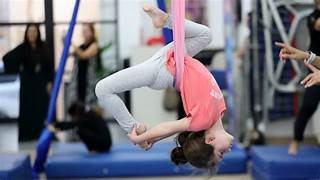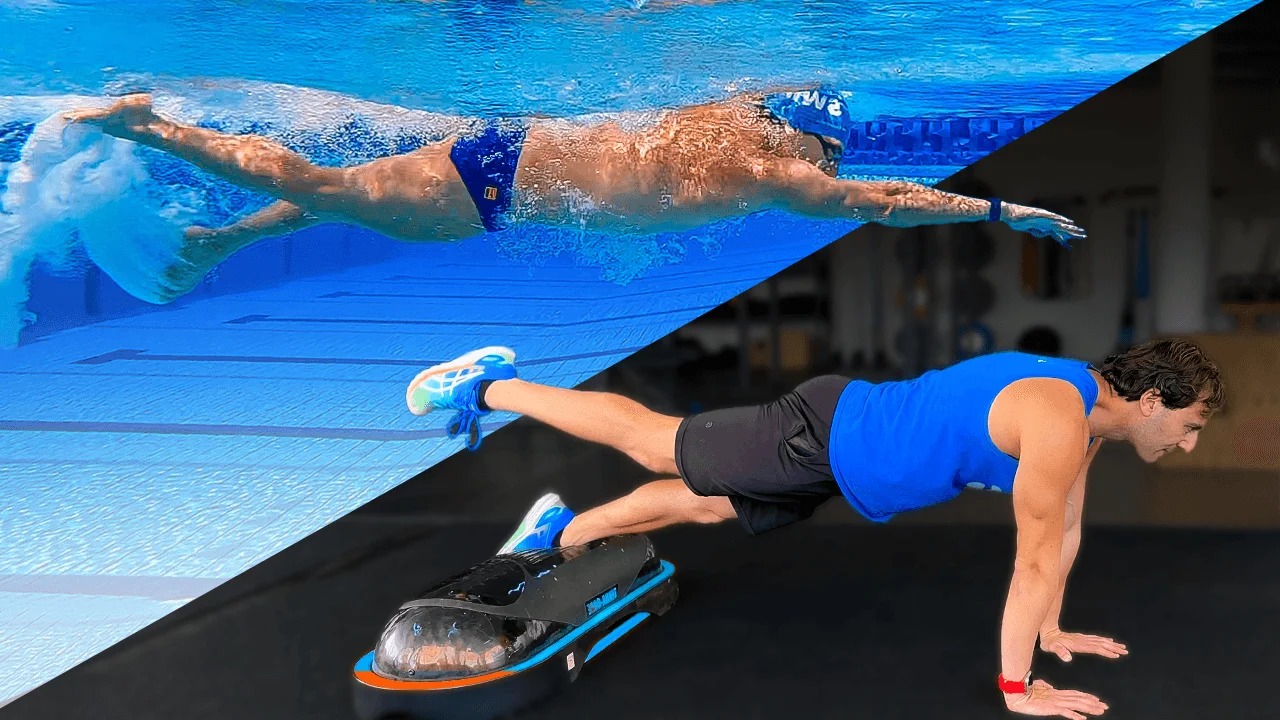
Circus Fitness – Learning Strength Through Acrobatics.
Circus fitness transforms traditional exercise by blending acrobatics, aerial arts, and performance skills into a full-body workout that builds strength, flexibility, balance, and coordination. Beyond physical fitness, it enhances mental focus, confidence, and creativity, allowing participants of all ages to explore movement as an art form, cultivate resilience, and experience a joyful, expressive, and empowe
💪 Fitness Guru
49 min read · 8, Oct 2025

Introduction
When we think of the circus, we often picture glittering costumes, dazzling acrobatics, and daring feats high above the crowd. But beyond the spectacle lies an incredible level of fitness, precision, and discipline. The performers’ movements are not just entertaining—they are the product of rigorous physical training rooted in body control, balance, strength, and coordination. In recent years, “circus fitness” has emerged as a global fitness trend, merging the art of acrobatics with modern exercise science to create a full-body, functional training experience.
This new form of workout invites ordinary people—not just professional performers—to experience the strength, balance, and creativity that acrobats develop through years of training. Circus fitness helps individuals rediscover movement in its most natural and expressive form, promoting a deeper connection between mind and body.
The Origins of Circus Fitness
The concept of circus fitness originates from the performing arts traditions of classical circuses that date back to the 18th and 19th centuries. Acrobatics, aerial arts, and juggling were not only forms of entertainment but also demonstrations of extraordinary human potential. Over time, modern circus troupes such as Cirque du Soleil redefined circus art by focusing more on aesthetics, athleticism, and narrative storytelling rather than just spectacle.
As circus schools began teaching these arts to the public, fitness enthusiasts discovered that acrobatics provided a unique and engaging workout. From there, “circus fitness” became a movement—one that combines strength training, gymnastics, dance, and creativity.
The Core Elements of Circus Fitness
Circus fitness integrates a wide variety of disciplines, each targeting different aspects of physical and mental fitness:
- Aerial Arts:
- Includes aerial silks, hoop (lyra), and trapeze. These movements demand upper body and core strength, flexibility, and spatial awareness. The constant lifting, wrapping, and suspending of body weight provide exceptional muscular endurance and grip strength.
- Ground Acrobatics:
- Focuses on tumbling, handstands, cartwheels, and partner acrobatics. These exercises train balance, joint stability, coordination, and explosive power.
- Flexibility and Contortion Training:
- Stretching routines inspired by contortion acts help enhance range of motion, prevent injuries, and improve posture.
- Balance and Tightrope Training:
- Using equipment like balance beams, slacklines, or tightropes, this training builds proprioception—the body’s awareness of its position in space—and sharpens focus.
- Juggling and Object Manipulation:
- These enhance hand-eye coordination, reflexes, and concentration, proving that circus fitness trains not only the body but also the brain.
- Dance and Flow Arts:
- Movement expression through rhythm and flow enhances body fluidity, grace, and creative freedom.
Physical Benefits of Circus Fitness
Circus fitness provides a multi-dimensional workout that challenges the body in unconventional ways. Some of the most significant physical benefits include:
- Full-Body Strength Development:
- Unlike machine-based workouts that isolate muscles, circus fitness demands integrated movement. Lifting your own body weight on silks, maintaining a handstand, or balancing on another person develops functional strength across multiple muscle groups.
- Enhanced Flexibility and Mobility:
- The combination of acrobatics and stretching routines promotes greater mobility and joint health, improving everyday movement patterns and posture.
- Core Power and Stability:
- Every circus discipline—from aerial tricks to balance exercises—relies on core engagement. This strengthens the abdominal and spinal muscles, reducing back pain and improving alignment.
- Improved Coordination and Balance:
- Circus workouts develop neuromuscular coordination. Tasks like juggling or balancing demand mental and physical synchronization.
- Cardiovascular Endurance:
- Continuous movement in aerial or acrobatic sequences elevates heart rate, improving cardiovascular health.
- Injury Resistance:
- The body learns to move efficiently, distributing loads evenly across muscles and joints, which can prevent strains or overuse injuries common in repetitive workouts.
Mental and Emotional Benefits
Beyond the physical aspect, circus fitness also nurtures the mind and spirit:
- Confidence and Empowerment:
- Mastering new tricks or overcoming fear of heights fosters confidence and resilience.
- Mind-Body Connection:
- Balancing, climbing, or flowing through aerial sequences requires deep focus and mindfulness, similar to meditation in motion.
- Stress Relief:
- The combination of creative expression, physical challenge, and teamwork releases endorphins and reduces anxiety.
- Social Connection:
- Circus fitness classes often emphasize teamwork and partner exercises, creating a sense of community and trust among participants.
- Creativity and Expression:
- Unlike traditional gyms, circus fitness allows for artistic movement—every spin, jump, and flip can become a form of personal storytelling.
Training Structure in Circus Fitness
A typical circus fitness session combines elements of conditioning, skill work, and recovery. Here’s how a session may be structured:
- Warm-Up (15-20 minutes):
- Includes dynamic stretching, joint mobility exercises, and light cardio to prepare the body for intense movement.
- Strength Conditioning (20-30 minutes):
- Focuses on developing specific muscle groups required for aerial lifts or acrobatic stability. Exercises may include pull-ups, planks, hollow body holds, or partner lifts.
- Skill Practice (30-40 minutes):
- Participants work on techniques—such as aerial climbs, inversions, handstands, or partner balancing.
- Flexibility Training (15-20 minutes):
- Deep stretches and mobility exercises, often influenced by yoga or dance, improve recovery and performance.
- Cool-Down and Reflection (10 minutes):
- Gentle stretching and breathing help relax muscles and integrate the mind-body experience.
Circus Fitness for Different Age Groups and Fitness Levels
One of the greatest advantages of circus fitness is its inclusivity. It can be adapted to suit beginners, athletes, children, and even seniors:
- Beginners:
- Start with ground acrobatics, basic balance, and flexibility work before advancing to aerial disciplines.
- Children:
- Circus classes improve motor development, self-esteem, and social cooperation through play and creativity.
- Athletes:
- Circus fitness enhances agility, body control, and injury prevention through cross-training.
- Older Adults:
- Modified exercises focusing on flexibility, stability, and gentle strength-building support mobility and cognitive function.
Safety Considerations in Circus Fitness
While circus fitness looks daring, safety is always a priority. Professional instructors ensure proper form, use of equipment, and progressive skill development. Key safety measures include:
- Supervised training in padded or matted environments
- Use of safety harnesses for aerial work
- Gradual progression from low to high difficulty levels
- Proper warm-up and recovery routines
- Awareness of personal limits and body signals
Circus Fitness in Modern Gyms and Communities
Circus-inspired workouts are rapidly gaining popularity in fitness studios, performing arts schools, and rehabilitation centers worldwide. Many gyms now offer specialized classes such as:
- Aerial Yoga or Hammock Training
- Pole Fitness and Lyra Hoop Classes
- Handstand and Inversion Workshops
- Partner Acrobatics and Balance Training
Even home fitness enthusiasts are integrating circus elements into their routines through online tutorials and virtual training sessions.
Why Circus Fitness Is the Future of Functional Training
Traditional gym routines often become monotonous and limited to isolated muscle groups. Circus fitness revolutionizes this by combining fun, challenge, and creativity. It engages multiple systems—muscular, cardiovascular, neurological, and emotional—creating a complete human performance experience.
Moreover, it reflects a growing cultural shift: people no longer just want to look fit—they want to feel capable, expressive, and alive. Circus fitness delivers all that by transforming the body into an instrument of art and strength.
Circus fitness is a dynamic, artistic, and holistic form of physical training that draws inspiration from traditional circus disciplines such as acrobatics, aerial silks, trapeze, juggling, handstands, and balance acts. It combines the creative freedom of performance with the rigorous demands of athleticism, offering a full-body workout that builds strength, flexibility, coordination, and confidence. The foundation of circus fitness lies in understanding how the body moves as a single, integrated system rather than as isolated muscle groups. When a person climbs an aerial silk, balances on another’s shoulders, or performs a handstand, every muscle—from the core to the fingertips—engages in precise coordination. Historically, circus arts have been associated with entertainment, but the evolution of modern fitness has brought these disciplines into mainstream health culture, transforming them into an accessible and empowering way to build physical and mental strength. At its core, circus fitness emphasizes functional movement—the ability to use one’s body effectively in real-world situations. Unlike repetitive gym routines, circus-based exercises challenge balance, proprioception, and agility. For instance, balancing on a tightrope or performing acrobatic lifts improves not just muscular endurance but also mental focus and spatial awareness. Aerial disciplines like silks and trapeze build upper-body and core strength as practitioners lift, wrap, and suspend their body weight, while ground acrobatics develop explosive power and stability. Meanwhile, juggling enhances hand-eye coordination, reflexes, and cognitive control, showing that circus training benefits both body and brain. Beyond physical transformation, circus fitness offers profound psychological benefits. It encourages self-expression, creativity, and courage—qualities often neglected in traditional training environments. Performing even a small aerial trick can instill immense confidence, while learning to trust a partner in acrobatics fosters teamwork and communication. The training demands mindfulness, as each move requires concentration and presence; a distracted mind can lead to imbalance or error. This mental discipline makes circus fitness a moving meditation—engaging the body’s strength and the mind’s stillness simultaneously. Additionally, it’s inclusive and adaptable for all fitness levels. Beginners start with basic balance exercises, stretching, or floor acrobatics before progressing to more advanced aerial or partner techniques. Children benefit through play-based learning that enhances motor skills, coordination, and confidence, while adults rediscover agility and body awareness. Even seniors can participate through low-impact flexibility and balance work that improves mobility and reduces fall risk. Safety, of course, is a cornerstone of circus fitness. Training environments are padded, instructors are certified, and progressions are gradual. Aerial work is practiced with harnesses or spotters, and emphasis is always placed on form, control, and body alignment. Physiologically, the results are remarkable—practitioners gain lean muscle, joint mobility, improved cardiovascular endurance, and exceptional core strength. Mentally, it cultivates resilience, as each new skill conquered replaces fear with mastery. The social aspect is equally rewarding: classes are often group-based, filled with laughter, collaboration, and mutual encouragement, creating a community spirit rarely found in solitary gym workouts. In modern times, circus fitness has grown from niche performance training to a global wellness trend. Fitness studios, dance schools, and even rehabilitation centers now offer aerial yoga, partner acrobatics, pole fitness, and handstand workshops. This expansion reflects a deeper cultural shift toward experiential and expressive fitness—people no longer seek only toned bodies but also joyful, creative movement that tells a story. The combination of artistry and athleticism makes circus fitness not just an exercise routine but a celebration of what the human body can achieve. It blurs the boundaries between sport and art, between strength and grace, between discipline and play. At its essence, circus fitness teaches more than physical endurance; it teaches trust—in one’s body, one’s partner, and one’s potential. Every climb, every flip, every balanced pose is a lesson in overcoming fear, pushing limits, and discovering inner strength. As practitioners learn to suspend themselves mid-air or balance effortlessly on a narrow beam, they also learn to balance their emotions, focus their minds, and embrace their individuality. The benefits ripple far beyond the training studio: improved posture, reduced stress, enhanced confidence, and a newfound appreciation for movement. Ultimately, circus fitness stands as a powerful metaphor for life itself—requiring courage, creativity, and control to perform the seemingly impossible. In a world where fitness often feels mechanical and monotonous, circus training restores a sense of wonder to physical exercise. It transforms sweat into art, repetition into rhythm, and discipline into freedom. With its fusion of physical challenge, mental focus, and artistic expression, circus fitness invites everyone to rediscover the joy of movement—to not just train for strength, but to perform their strength.
Circus fitness, a unique and increasingly popular approach to physical training, represents an extraordinary fusion of art, athleticism, and human potential, drawing inspiration from traditional circus disciplines such as acrobatics, aerial silks, trapeze, hand balancing, contortion, juggling, and tightrope walking, each of which challenges the body in multidimensional ways and pushes the limits of both strength and flexibility while simultaneously demanding mental focus, precision, and creativity, and unlike conventional gym workouts that often isolate specific muscle groups through repetitive motions, circus fitness engages the body as a whole, promoting functional strength that translates into real-world movement, because when an individual performs an aerial silk climb, every fiber of the core, shoulders, arms, and even legs must work in coordinated harmony to achieve controlled ascent, balance, and eventual descent, and when attempting handstands, partner lifts, or tumbling sequences, the entire kinetic chain—from fingertips to toes—is activated to maintain alignment, stability, and balance, highlighting the integral role of the core in generating power, stabilizing joints, and protecting the spine, while simultaneously training the nervous system to coordinate complex sequences, anticipate shifts in weight, and adapt to dynamic situations, which makes circus fitness not only a physical but also a cognitive workout, engaging concentration, spatial awareness, and problem-solving skills, and these cognitive benefits are reinforced through activities such as juggling or object manipulation, where hand-eye coordination and quick reflexes are tested, resulting in sharper mental acuity, improved focus, and enhanced neuroplasticity, while flexibility and mobility exercises, often drawn from contortion or dance-inspired routines, extend the range of motion in major joints, increase muscular elasticity, and reduce the risk of injury, allowing practitioners to move with fluidity and grace, and the combination of strength, flexibility, and balance develops resilience in both body and mind, as participants learn to overcome fear, challenge personal limits, and master seemingly impossible maneuvers, cultivating a profound sense of self-confidence and mental fortitude, which is particularly evident when performing high-risk aerial stunts where trust in one’s own body, equipment, and sometimes a partner is essential, and this trust-building aspect fosters teamwork, communication, and social connection, as circus fitness is often practiced in group settings where partners support, lift, and catch one another, creating bonds that are rooted in mutual reliance, empathy, and shared achievement, and beyond the social and psychological benefits, circus fitness provides substantial cardiovascular conditioning, as continuous movement, climbing, swinging, and tumbling sequences elevate heart rate, improve lung capacity, and enhance endurance, while muscular endurance is developed through sustained holds such as static poses on aerial silks, handstands, or balancing acts, and grip strength is significantly improved through hanging, lifting, and supporting body weight in various positions, contributing to improved performance in other athletic endeavors and daily activities, and the mental engagement required in circus fitness encourages a meditative state, often referred to as “flow,” where individuals become fully immersed in movement, moment-to-moment awareness, and the rhythm of their own body, leading to reduced stress levels, heightened mindfulness, and emotional release, which distinguishes circus fitness from traditional forms of exercise that can feel monotonous or mechanical, while at the same time it allows creative expression, as every leap, spin, flip, or balance can be transformed into a personal performance that reflects individual artistry, mood, and style, and the adaptability of circus fitness makes it suitable for all ages and fitness levels, with beginners starting on the floor practicing basic acrobatic rolls, core activation, and balance exercises, and gradually progressing to aerial silks, lyra hoops, trapeze, and partner acrobatics as confidence and strength grow, while children benefit from enhanced motor development, coordination, and self-esteem through playful exploration, adults regain agility, flexibility, and body awareness, and older adults safely improve balance, mobility, and cognitive function through modified exercises, all within a framework that emphasizes safety, progression, and mindful engagement, as proper warm-ups, spotters, mats, harnesses, and instruction minimize injury risk while allowing exploration of challenging movements, and in modern fitness culture, circus-inspired training has expanded globally, with gyms, studios, and community centers offering aerial yoga, trapeze classes, handstand workshops, partner acrobatics, pole fitness, and flow arts, reflecting a shift in how people approach health and wellness, moving from purely functional or aesthetic goals to experiences that engage body, mind, and creativity simultaneously, and this holistic approach has significant implications for long-term health, as functional strength, joint stability, core activation, cardiovascular endurance, flexibility, and neuromuscular coordination all contribute to improved posture, movement efficiency, injury prevention, and overall vitality, while the mental and emotional benefits—confidence, resilience, focus, creativity, and joy—enhance quality of life beyond the gym, illustrating that fitness need not be repetitive, monotonous, or isolated from the imagination, and ultimately, circus fitness embodies a philosophy of human potential, teaching that the body is capable of extraordinary feats when trained thoughtfully, mindfully, and creatively, transforming exercise into a form of self-expression, adventure, and empowerment, so that every participant, regardless of age, fitness level, or prior experience, can discover their own strength, flexibility, balance, and artistry, while also cultivating focus, resilience, and confidence, reminding us that fitness can be more than routine—it can be exhilarating, transformative, and deeply joyful, merging the worlds of art, sport, and personal growth into one cohesive, compelling, and endlessly rewarding practice.
Conclusion
Circus fitness is more than a workout—it’s a philosophy of movement and self-discovery. Drawing from centuries-old traditions of acrobatics and performance, it combines strength, balance, flexibility, and artistic expression into one empowering practice. Participants learn not only to lift and balance but to trust their bodies, conquer fears, and express themselves creatively.
From aerial silks to partner balancing, each exercise contributes to functional strength, core stability, and mental focus. The result is a well-rounded form of fitness that trains both the body and the mind.
In a world obsessed with machines and metrics, circus fitness reminds us of something essential: the human body is capable of magic when it moves freely, fearlessly, and joyfully.
Q&A Section
Q1: What is circus fitness?
Ans: Circus fitness is a form of training inspired by circus arts such as acrobatics, aerial silks, trapeze, and balance exercises. It combines physical conditioning, flexibility, and creativity to develop full-body strength, coordination, and mental focus.
Q2: Is circus fitness suitable for beginners?
Ans: Yes. Circus fitness can be scaled for all fitness levels. Beginners start with ground exercises and flexibility training before advancing to aerial or partner acrobatics.
Q3: What muscles does circus fitness target?
Ans: It engages the entire body—especially the core, shoulders, arms, legs, and back—through dynamic and functional movements that build strength and stability.
Q4: Is circus fitness safe?
Ans: Yes, when practiced under professional supervision with proper safety measures like mats, harnesses, and progressive training steps, circus fitness is both safe and highly effective.
Q5: How does circus fitness benefit mental health?
Ans: It reduces stress, boosts confidence, and fosters mindfulness by combining physical challenge with creative expression and teamwork.
Similar Articles
Find more relatable content in similar Articles

Circus Fitness – Learning Strength Through Acrobatics...
Circus fitness transforms trad.. Read More

Fitness on a Budget – Training With Household Items...
Transform your home into a ful.. Read More

Underwater Workouts – Training in Pools for Strength & Endur..
Underwater workouts offer a un.. Read More

Fitness for Digital Nomads Living on the Road...
Staying fit while living as a .. Read More
© 2024 Copyrights by rFitness. All Rights Reserved.